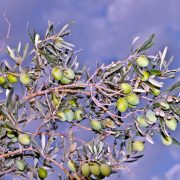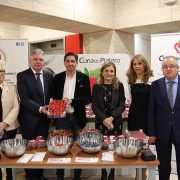Jaen irrigators successfully tested the first assisted pump with water
The Community of Irrigators Pantano de Rumblar, in the municipality of Villanueva de la Sierra Jaen, is proving successful first hydro-propelled pump for irrigation, designed by the Dutch startup aQysta. After installation and commissioning of 35 of these pumps in several countries, on Tuesday 21st June will be presented at the farmhouse of San Rafael this innovative initiative whose main motivation is economic and environmental sustainability, requiring neither oil nor electricity to operate, because it uses the kinetic energy of water.
Barsha, Dutch startup aQysta Holding BV, is a hydro-powered irrigation pump. It is a sustainable solution that uses the kinetic energy of rivers, canals and ditches to pump water without requiring other external sources of energy, such as fossil fuels or electricity. The Barsha pump operates practically without operating costs due to their low maintenance requirements and provides an affordable irrigation technologies conventional alternative. An advance that, according to sources at the Dutch Embassy in Spain, “is a safe bet in a country like Spain, with an area of irrigated land as productive and important”. “Within 10 years -it is secured- the use of this pump means saving up to 70% of the total cost of irrigation, so you can recover the investment made in a period of just a couple of years.”
In fact, according to calculations made, with the pump Barsha savings 1400-2400 € / ha. would occur, by eliminating of costs of irrigation the electricity bill, which accounts for more than 41% of its total amount and why in Spain 38% is paid more than the average expenditure of EU countries. Thus, administrations and irrigators can maximize energy efficiency, one of its highest aspirations, along with improving the efficiency of water use, which will not only increase profitability but also reduce the environmental footprint.
Currently, agricultural sectors use about 80% of total water consumption in Spain. The current irrigated area is 3.6 million hectares, a figure in moderate but steady growth year after year. Thanks to successive modernization plans, types of irrigation have evolved into systems such as drip irrigation and sprinkler irrigation, which allow better conservation of water resources and consequent savings. However, keep in mind that water pumping is done at the expense of energy consumption and capital spending. Add to that the 70% increase that has been experiencing the energy consumed by irrigation, between 1996 and 2011, rising from 2,136 GWh to 3,647 GWh, modern irrigation becomes less profitable. Between 8,000-10,000 € / ha. infrastructure expenses are calculated.
The day of filing the Barsha pump (elected in 2014 as the most innovative clean technology project by Climate-KIC, the main sustainable climate technology initiative of the European Union) will be attended by the ambassador of the Netherlands in Spain, Matthijs van Bonzel, the territorial delegate of Agriculture, Fisheries and Rural Development in Jaen, Juan Balbin, mayor of Andújar, and Francisco Huerta, cofounder and commercial director of aQysta, Pratap Thapa. It will start at 11:00 am with a visit to the farm where the pump is installed. Later, at 12:00, in the halls of the Palace of Children of Don Gome, Andújar, will take place a technical explanation by Jaime Michavila, responsible for engineering and R & D aQysta, which will be complemented by interventions of manager of the Community of Irrigators of Pantano de Rumblar, Rafael Delgado and spokesman Community of irrigators Villa de Híjar (Teruel), José Luis Chorro, who will present the interest of your entity aQysta pump.
The closing ceremony will be borne by the territorial delegate of Jaen and the Minister of Agriculture of the Dutch Embassy in Spain, Catharina Zwitser.
On the company
aQysta, a startup high-tech with a staff of 14 technicians from 7 different nationalities, has already installed 35 pumps Barsha worldwide. The first in Spain is already underway in Andújar, in the Ecocortijo of San Rafael, Villanueva de la Reina.














